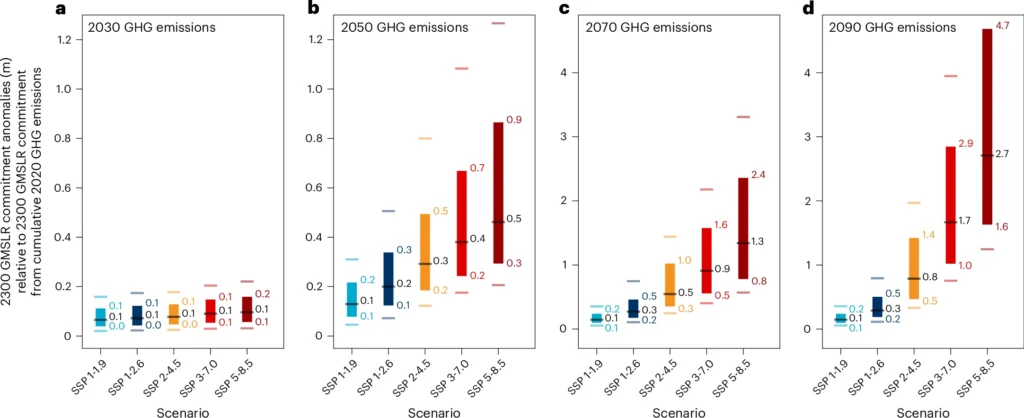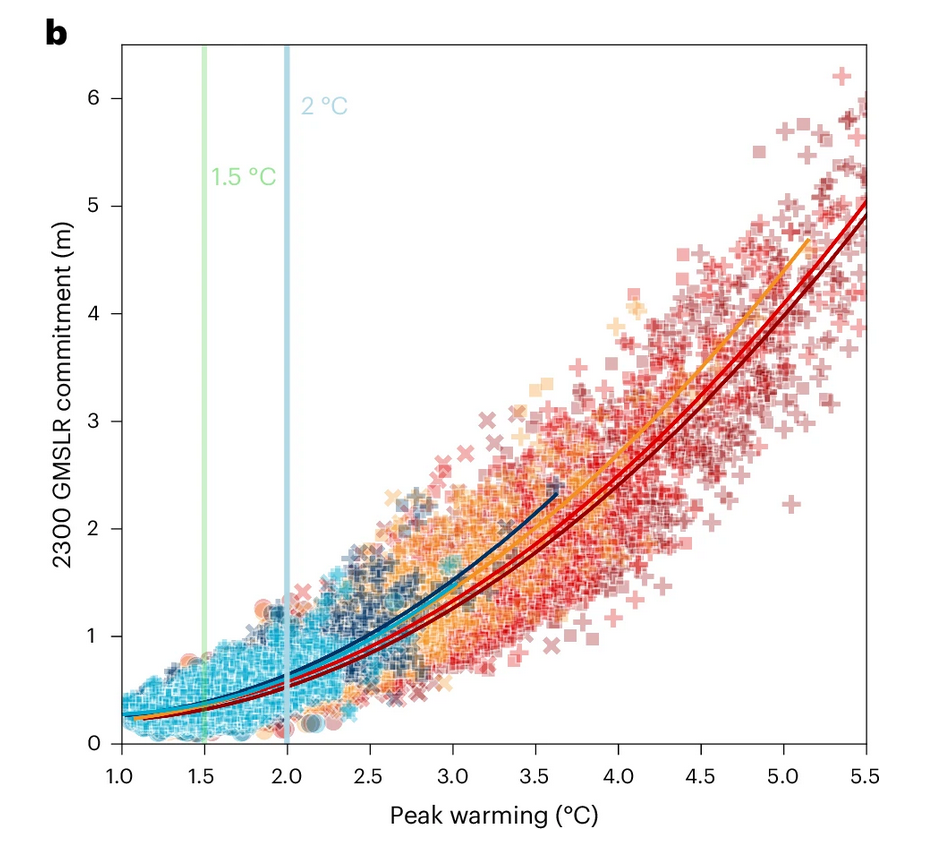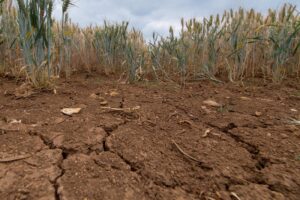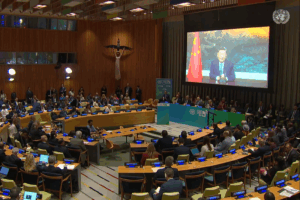Welcome to Carbon Brief’s China Briefing.
China Briefing handpicks and explains the most important climate and energy stories from China over the past fortnight. Subscribe for free here.
Key developments
Floods in the south, drought in the north
EXTREME WEATHER: China has been hit by extreme weather over the past two weeks. About 35% of its corn production was affected by severe drought in north China where some rivers had “dried up a month ago”, reported Reuters. In the south, torrential rain and flooding killed at least 38 people in Guangdong province – China’s most populated – as well as eight people in Hunan province and two in Anhui province. Local newspaper Guangxi Daily reported that this week’s floods in Guilin, capital city of Guangxi province, were the largest in the area since 1998. Chinese president Xi Jinping “has urged all-out efforts to fight floods and droughts, and to ensure solid work in disaster relief”, said state agency Xinhua. Some 33 rivers in China “exceeded warning levels”, according to Xinhua.
-
Sign up to Carbon Brief’s free “China Briefing” email newsletter. All you need to know about the latest developments relating to China and climate change. Sent to your inbox every Thursday.
GLOBAL WARNING: Yang Pingjian, director of the environmental sociology department at the Chinese Academy of Environmental Sciences, wrote in China Environment News that “the adverse effects of climate change have become more and more obvious: heavy rainfall, typhoons, hail and other extreme weather occur” in China. The National Climate Center said that China is “experiencing more frequent and intense heatwaves due to global warming”, reported China Daily. The “average onset of high temperatures (those exceeding 35C) has advanced by 2.5 days per decade” and the average heatwave starting date has moved from 24 June in 1981-1990 to 7 June in 2011-2020, the outlet added. New research covered by the Hong Kong-based South China Morning Post found that “widespread heat stress will be felt by most of China’s population by the end of the century due to climate change, with the north of the country expected to be hit hardest”.
SUMMER PRESSURE: These high temperatures may cause peak electricity consumption to grow by more than 100 gigawatts (GW) year-on-year during this summer’s peak period, putting pressure on “ensuring power supply”, China Securities Journal reported. Writing in financial newspaper Caixin, Qin Qi, China analyst at the Centre for Research on Energy and Clean Air (CREA) noted that this expected 100GW increase is “similar to 2022’s growth, which saw power shortages and blackouts”, adding that this “highlighted the need for a more flexible inter-provincial electricity trading mechanism”. She also pointed to the need for flexible grid operations and demand-side measures to help China “effectively manage peak demand pressures without compromising its climate commitments”.
Renewable energy pushed thermal power into decline
THERMAL DECLINE: A surge in solar power and hydropower in China in May led to a 4.3% decline in thermal power – mainly coal – that month, Bloomberg reported, adding that this supported earlier Carbon Brief analysis finding China’s emissions may fall this year. The drop in thermal power was the largest since 2022 and could continue as long as China does not “reprioritise carbon-heavy investment to revive growth”, the outlet added. Hydropower generation rose 38.6% year-on-year in May 2024 and solar by 29.1%, state-run industry newspaper China Energy Net said.
SOLAR CAPACITY: China’s National Energy Administration (NEA) pledged in a press conference to “guide production capacity expansion” and “prevent unnecessary investments” in the country’s solar manufacturing sector, following a call for help from industry participants “grappl[ing] with a surge in capacity”, according to finance newswire Yicai. Economic news outlet Jiemian quoted Li Chuangjun, director of the NEA’s new energy and renewable energy department, saying at the press conference that the industry should “avoid repetitive construction of low-end solar capacity”.
NO OVERCAPACITY?: NEA head Zhang Jianhua said at the same press conference that “whether from the perspective of comparative advantage or of global market demand, China’s new energy industry does not have a so-called ‘overcapacity’ problem”, state-run newspaper Science and Technology Daily reported. Zhang added that “supply moderately exceeding demand is helpful for achieving technological progress and reducing product costs”, and that the solar industry specifically is characterised by a strong private sector, “sufficient” competition and companies “choosing to expand production” due to “optimistic outlooks towards future markets”, according to the newspaper.

EU and China to discuss electric vehicle tariffs
NEW TALKS: After expressing opposition to the EU’s additional tariffs on Chinese electric vehicles (EVs) and announcing an anti-dumping investigation into pork products from the EU, China agreed to a new discussion over the tariffs this week, the Financial Times reported. Bloomberg said the talks “may buy time” for China to “sow enough opposition” between EU member states, as Beijing suggested German luxury automakers “could benefit if Berlin convinces the EU to drop tariffs”.
MIDDLEMAN GERMANY?: Germany’s economy minister Robert Habeck, who visited China last weekend, showed there was an “open attitude of China and some politicians in the EU in seeking dialogue and cooperation amid trade friction”, said a Global Times’ editorial. Habeck said the EU’s tariffs measures were “not a punishment” and its “doors are open for discussions”, Reuters reported. The German Chamber of Commerce in East China, a business advocacy group, also argued that the EU tariffs “cannot offer protection to German carmakers or increase their competitiveness”, SCMP reported. Reuters said that China’s share of Germany’s EV imports rose to 40.9% in the first quarter of this year.
CHINA COMPROMISE?: China’s state-controlled Global Times newspaper wrote “observers said the best outcome the Chinese side wants is that the EC, the executive body of the EU, scrap its tariff decision before 4 July and abide by WTO rules”. Another state-run newspaper China Daily said in an editorial that Beijing is “willing…to try and resolve the reasonable concerns of the EU” and hopes that Brussels will avoid escalating frictions “by meeting China halfway”. In an interview with the Financial Times, Zhu Min, a member of China’s “five-year plan” committee, argued there was no “overcapacity” or “dumping” of cheap EVs on the European market. He said the price of EVs is higher overseas than in the domestic market and that China’s domestic buyer rebate also applied to foreign EV brands, such as Tesla in China, added the outlet.
EU-China climate dialogue and Li’s new commitment
CHINA-EU TALKS: Amid their ongoing tariff dispute, China and the EU held the fifth “high-level environment and climate dialogue” on 18 June, said Xinhua. The Chinese vice premier Ding Xuexiang and the European Commission’s Maroš Šefčovič agreed there were “common interests” and discussed “climate change and protecting the ecological environment”, the state news agency continued. Ding also said the EU’s tariff plan was “typical protectionism” which is “not conducive to the EU’s green transformation”, added the agency. China’s minister of ecology and environment, Huang Runqiu, and the EU’s commissioner for climate action, Wopke Hoekstra, signed “an updated memorandum of understanding to enhance cooperation on emissions trading”, the Chinese International Environment Net reported.
PREMIER’S REMARKS: The Chinese premier Li Qiang announced yesterday that “China is committed to addressing climate change and has been proactively developing green industries such as new energy” at the World Economic Forum’s “summer Davos” meetings in Dalian, China, Xinhua reported. Li said “the green transition itself holds immense potential for development” and that all nations should “create more growth drivers for the green economy”, added Xinhua. Reuters said Li also “hit back” at overcapacity accusations from the US and EU, arguing that China’s production of clean energy technologies “first met our domestic demand, but also enrich[es] global supply”. At a domestic conference, president Xi encouraged technology innovation and said Chinese EVs “add[ed] new momentum to the global automotive industry”, according to Xinhua.
Spotlight
How is China adapting to increasingly frequent flooding?
In recent years, China has seen more frequent floods caused by heavy rains. Dozens of people have died in south China this month due to torrential rain and flooding. In April, floods caused damage worth 12bn yuan ($1.65bn) – “the worst [losses] in 10 years”.
In this issue, Carbon Brief looks at the reasons for China’s recent floods and how the country is trying to adapt. A full version of this article will be published on Carbon Brief’s website.
Rising floods
There are various factors behind the frequent heavy rain and flooding in China in recent years.
In a press briefing covered by China Daily, Zheng Zhihai, chief forecaster at the National Climate Centre of the China Meteorological Administration (CMA), said that “higher than normal temperatures” were behind frequent heavy rainfall in southern provinces since April.
China Daily noted: “This temperature increase has elevated the atmospheric moisture levels, intensified convective processes, and led to more frequent occurrences of heavy rainfall.”
Sea level rise has also been cited as a primary factor behind China’s coastal floods, as it increases the intensity and frequency of storm surges and raises baseline water levels.
The El Niño-Southern Oscillation, a natural climate cycle that entered its warmer El Niño phase in mid 2023, was partly to blame as it raised sea surface temperatures and directed vast amounts of water vapour from the South China Sea and the Bay of Bengal towards southern China, found one analysis.
Dr Faith Chan, head of the School of Geographical Sciences at the University of Nottingham Ningbo China, told Carbon Brief that the rainfall pattern in Guangdong during this April was quite similar to the intensive rainstorm on 6-8 September in 2023 after Typhoon Haikui.
In addition to the natural causes, human activity also played a role. Chan said:
“Of course, the El Niño effect enhanced the wet and low-pressure moist current in the east coast of China and the west Pacific. But human-induced climate change led to the greenhouse effect and caused sea temperature to rise, which caused more storms and low-pressure rain belts. That is a fact.”
Indeed, Prof Yang Chen of the Chinese Academy of Meteorological Sciences told Carbon Brief that human-caused intensification of heavy rainfall over China had been even larger than expected.
Adaptation measures
China has built a number of large water projects to prevent flooding, such as the south-north water transfer projects in the Yangtze river that was launched in 2002.
In the most recent “national water network construction planning outline” published by the State Council – China’s top administrative authority – constructing “national water networks” by 2035 is labelled as the “backbones” of future flood prevention.
China also launched the “sponge city programme (SCP)” in 2015.
Sponge cities cost the government 1.5–1.8bn yuan ($210-250m) between 2015 and 2018. They are designed to collect, purify and re-use at least 70% of the floodwaters through “green-blue facilities”, such as green roofs, permeable pavements and stormwater parks, in urban areas. The overall system was meant to resolve the issues of urban heating, freshwater scarcity and flooding all at once.
But the 2021 floods in Zhengzhou, a showcase sponge city, laid bare the inadequacy of the SCP in the face of climate change.
A paper suggested the SCP, which is designed to withstand one-in-30-year rain events, has limited effectiveness against more intense downpours.
Additionally, SCP can create a false sense of security, which encourages more people to move to high-risk areas, leading to an increase in population and assets in exposed areas that require ever-increasing protection in a cycle referred to as a “levee effect”, said Chen.
Meanwhile, a lack of coordination added another layer of difficulties. Zheng Yan, researcher at China Academy of Social Sciences, noted in the aftermath of the 2023 Beijing flood that government bodies often looked after their own jurisdiction and aimed only to move the problem and divert the floods quickly, which piled pressure on cities in downstream areas.
Looking abroad
As flooding is a challenge faced by cities across the world, there is a plethora of ideas and technologies that China can draw on.
Rotterdam, a Dutch delta city of 600,000 people that is surrounded by water on four sides, has built water storage facilities, such as an underground parking garage with a basin the size of four Olympic swimming pools. It has also installed green roofs and facades to absorb rainwater.
Japan has built an intricate network of concrete tunnels and vaults about 14 storeys beneath the Saitama prefecture in the outskirts of Tokyo, Japan’s capital city, that could hold more than 1,000 Olympic pools of rainwater.
Both cities’ underground flood diversion facilities are often used as a prime example of a viable flood defence system for urban cities on the frontline of climate change.
Hong Kong has a similar underground stormwater storage system beneath the sport pitches of the Happy Valley Racecourse, designed to withstand one-in-50-years flood events.
Chan said it is difficult to compare flood mitigation measures as each city is very different in terms of geography, demographic, densities and topography.
Nevertheless, he told Carbon Brief:
“In my opinion, China’s megacities should think about using underground spaces to store the sudden extreme discharge from super intensive rainstorms…Tokyo and Rotterdam are quite wise in that regard for using their underground spaces.”
This Spotlight is written by freelance climate journalist Jia Ning Tan for Carbon Brief.
Watch, read, listen
CHINA IN SPACE: The Economist’s “The Intelligence” podcast aired an episode about China becoming a “superpower” in the physical sciences.
RUSSIA-CHINA PIPELINE: A Financial Times podcast said Russia and China are “deadlocked” over a gas pipeline deal.
FARMING LAND: The Chinese communist party’s magazine Qiu Shi published an article by Hunan province’s communist theory study group on protecting arable land and the “political responsibilities” related to it.
CARBON FOOTPRINT: Finance outlet Southern Finance Omnimedia’s social media account 21 Low Carbon published an explanation of China’s new “national unified carbon footprint management system”.
$940m
The total value of an international “sustainability bond” issued by the Bank of China for investment in “renewable energy, sustainable water resources and wastewater management infrastructure projects” in the countries that joined China’s Belt and Road Initiatives (BRI). (The total value of loans for BRI countries reached $87bn in 2016 and $3.7bn in 2021.)
New science
Climate Policy
China and the US – two of the world’s biggest methane emitters – should make their methane policies more “climate-centric”, according to a new study. Existing policies relating to methane are concentrated in the energy sector and are “largely driven” by safety, pollution concerns and use of resources, rather than reducing greenhouse gas emissions, the study said. The researchers suggested that both countries should focus on methane mitigation and “consider more climate-centric policies”.
Energy Policy
The Chinese government has employed economic incentives to offset the financial impact of the clean energy transition, but “these measures may not fully address the underlying issue of climate apathy, wherein individuals prioritise immediate interests over long-term climate concerns”, a new study said. Surveying 4,700 Chinese adults each year for three years, the study found that those on low incomes were less likely to support climate policy, with “climate apathy” explaining a much larger share of this effect – some 38% – than “economic burden”, which only explained 8% of the effect on policy support. The authors concluded: “Addressing climate apathy is a cost-effective strategy to boost policy support.”
Investigating the impact of weather on stroke in summer
International Journal of Biometeorology
A new study collected data of stroke hospitalisation in the city of Tianjin, China, from 2016 to summer 2022. The study found a direct link between temperature extremes and hospitalisation: “83% of the Inpatient-heavy events within the study period were caused by a combination of dramatic temperature changes and continuous high temperatures.” The authors concluded: “More attention should be paid to the combined effects of continuous high temperature and sudden temperature changes in summer stroke prevention.”
China Briefing is compiled by Wanyuan Song and Anika Patel. It is edited by Wanyuan Song and Dr Simon Evans. Please send tips and feedback to china@carbonbrief.org
The post China Briefing 27 June 2024: Extreme weather; New talks on EV tariffs; Coal power decline appeared first on Carbon Brief.
China Briefing 27 June 2024: Extreme weather; New talks on EV tariffs; Coal power decline
Greenhouse Gases
Rapid emissions cuts would avoid 64cm of ‘locked in’ sea level rise by 2300
Cutting emissions in line with the 1.5C warming limit, rather than following current climate policies, could curb long-term sea level rise by 64cm, a new study says.
The research, published in Nature Climate Change, projects how much sea level rise will be unavoidable – or “locked in” – by the year 2300, due to emissions over the coming decades.
According to the authors, 29cm of global average sea level rise is already in the pipeline due to the emissions that were released up to the year 2020.
Following current climate policies until the year 2090 will “lock in” an additional 79cm of sea level rise for the year 2300, the study finds.
However, reducing emissions in line with 1.5C would cut this additional sea level rise to 15cm.
The analysis shows that “if we reduce emissions rapidly in the coming decades, there is a clear path to limiting the legacy of sea level rise”, the lead author of the study tells Carbon Brief.
The study also explores regional sea level rise, showing that Pacific small-island nations will face some of the highest rates of sea level rise.
A scientist not involved in the research tells Carbon Brief that the paper “exposes a deep inequity” between nations, arguing that this makes “ambitious” action to cut greenhouse gas emissions “not just a climate necessity, but a climate-justice imperative”.
‘Locked in’
Average global sea level has risen by more than 20cm since 1900, driven mainly by human-caused climate change through thermal expansion of the ocean and the melting of glaciers and ice sheets.
Rising seas are already threatening to wipe out small-island nations, jeopardising the security, livelihoods and cultures of people who live in these areas. Meanwhile, coastal regions around the world are facing more frequent flooding, erosion and saltwater intrusion.
The authors of the new study explain that emissions released over the coming decades will affect global sea levels for hundreds of years. This is because the oceans and ice sheets respond slowly to past and present warming, they note.
The authors call this “locked in” or “committed” sea level rise.
The study explains that sea level projections are generally based on 21st century emissions pathways, but notes that “late-century emissions then dominate the longer-term sea-level response and mask the impact of near-term emissions”.
In contrast, this study assesses the impact of emissions both early and late in the 21st century – including past emissions and those projected to occur under different emissions pathways. The research investigates how much sea level rise will be locked in by the year 2300 through these emissions.
According to the authors, 29cm of global average sea level rise, compared to 1995-2014, is already locked in due to the emissions that were released up to the year 2020.
Rising seas
The study uses emulators – simple climate models with lower time and computational costs than full-scale Earth system models – to model how much sea level rise will be locked in by 2300 due to 21st century emissions.
The authors chose five emissions pathways and ran multiple model runs where they simulated sudden stops in emissions at the end of each decade for each pathway. This allowed them to isolate the emissions just until these dates.
For example, modelling a sudden drop in emissions in the year 2050 allows the authors to calculate how much sea level rise over the next two centuries is driven solely by human-caused emissions released over the next two decades.
The authors use five emissions pathways:
- SSP1-1.9: A very-low emissions reductions pathway “consistent with” the Paris Agreement’s 1.5C limit
- SSP1-2.6: A “low” emissions pathway consistent with 2C of warming
- SSP2-4.5: A “current climate policy-like trajectory”
- SSP3-7.0: A “high” emissions pathway
- SSP5-8.5: A “very-high emissions” pathway
The left-most panel shows how much additional sea level rise is locked in for the year 2300 due to emissions produced between 2020 and 2030. The next three panels show the results for emissions produced between 2020 and 2050, 2070 and 2090, respectively.
The plot shows that higher levels of greenhouse gas emissions lock in more sea level rise for the year 2300.

The authors find that, under the SSP2-4.5 “current climate policies” scenario, human-produced greenhouse gas emissions over 2020-50 will lock in an additional 29cm of sea level rise by the year 2300. This number grows to 79cm when including emissions out to 2090 under this scenario.
Meanwhile, under the scenario consistent with the 1.5C limit, only 15cm of additional sea level rise will be locked in by 2090.
This means that efforts to cut greenhouse gas emissions over the coming decades could curb long-term sea level rise by an extra 64cm.
The study authors say that their results “reinforce how every increment of additional peak warming from cumulative emissions irreversibly increases sea level rise”.
Dr Alexander Nauels is a science adviser at Climate Analytics and lead author on the study. He tells Carbon Brief that the world is “already committed to a really substantive amount of sea level rise” and stresses that this must be considered in terms of “adaptation, planning and risk management”.
However, he adds, “if we reduce emissions rapidly in the coming decades, there is a clear path to limiting the legacy of sea level rise that we would produce in the coming decades”.
Dr Catia Domingues, is a researcher at the UK’s National Oceanography Centre and was not involved in the study. She tells Carbon Brief that the study’s methodology is “clever and necessary”. She adds:
“[The study] clearly shows how the emissions from just the next 30 years, under current climate policies, will write an irreversible chapter for centuries to come, locking in significant sea level rise on their own.”
Warming levels
The authors also calculate the committed sea level rise at different warming levels.
The chart below plots sea level rise against warming level for every scenario and time period used in the study. It highlights how higher levels of warming commit the world to ever higher seas.

Committed sea level rise by 2300 at different warming levels, under SSP1-1.9 (light blue), SSP1-2.6 (dark blue), SSP2-4.5 (yellow), SSP3-7.0 (red) and SSP5-8.5 (dark red) pathways. Circles, X’s, squares and crosses indicate data points for 2030, 2050, 2070 and 2090 respectively. The green and blue lines show the 1.5C and 2C temperature thresholds. Source: Nauels et al (2025).
The authors note that the relationship between global temperature and committed sea level rise to 2300 is not “linear”, noting that the amount of sea level rise that is locked in by warming accelerates as global temperatures rise.
The authors explain that this is due to a “non-linear increase in ice mass loss in a warmer world” – in other words, physical feedbacks mean that higher levels of warming could see disproportionately large increases in ice losses.
Nauels tells Carbon Brief many sea level processes, such as ice-sheet responses, are still not “fully understood”. This means that when looking out to 2300, there can be “large uncertainties” in results, he adds.
Nevertheless, he argues that it is “still very important to explore the longer-term sea level response, because of the huge risk that is attached to it”.
Inequity
The main findings of the study focus on global average sea level rise. However, the authors note that sea level rise is not consistent across the world, with some regions facing faster rates of sea level rise than others.
This is largely due to ocean currents, driven by wind, warming, evaporation and rainfall, which push large masses of water around the planet. It is also caused by the bumpy, non-uniform surface of the earth.
To show these differences, the authors also selected a handful of coastal regions to study.
Nauels tells Carbon Brief that the study authors decided to focus on a handful of regions that “diverge” from the average global trend.
For example, they find that Pago Pago – the capital of American Samoa, which is made up of a string of coastal villages – will experience greater committed sea level rise than the global average.
On the other hand, Oslo is experiencing “land uplift” and actually shows a drop in sea level under the lowest warming scenario.
The NOC’s Domingues tells Carbon Brief that the study “exposes a deep inequity” between nations. She adds:
“This makes ambitious mitigation not just a climate necessity, but a climate-justice imperative.”
The post Rapid emissions cuts would avoid 64cm of ‘locked in’ sea level rise by 2300 appeared first on Carbon Brief.
Rapid emissions cuts would avoid 64cm of ‘locked in’ sea level rise by 2300
Greenhouse Gases
Cropped 22 October 2025: Global forest loss dips; Bird species in peril; Climate impact on Thai trees
We handpick and explain the most important stories at the intersection of climate, land, food and nature over the past fortnight.
This is an online version of Carbon Brief’s fortnightly Cropped email newsletter. Subscribe for free here.
Key developments
Deforestation dropping, but not fast enough
LOSING FOREST: The world lost almost 11m hectares of forest each year over the past decade – an area almost the same size as Iceland, the UN Global Forest Resources Assessment found. The overall rate of deforestation slowed over 2015-25 – compared to annual losses of 13.6m hectares over 2000-15 and 17.6m hectares over 1990-2000. [Carbon Brief will publish an article later this week detailing more key findings.] Elsewhere, a different UN report found that annual spending on forests must more than triple to $300bn by 2030 to meet climate and nature goals.
-
Sign up to Carbon Brief’s free “Cropped” email newsletter. A fortnightly digest of food, land and nature news and views. Sent to your inbox every other Wednesday.
POOR PROGRESS: At the same time, a third report found that more than 8m hectares of forest was destroyed in 2024 – which is 63% above the trajectory needed to put an end to deforestation by 2030. The Forest Declaration Assessment report said that countries are off track to meet a pledge from more than 100 countries to halt and reverse global deforestation by 2030. It noted that agriculture caused 86% of global deforestation in the past decade. In its coverage of the report, Climate Home News noted that experts said the findings were a “wake-up call” ahead of COP30 in the Amazon.
FOREST FINANCE: An investigation from Global Witness found that banks and asset managers around the world generated $26bn from “financing deforesting companies” through investments, loans and other financial services between 2016 and 2024. US financial institutions earned the biggest gains, it said. Elsewhere, the EU “u-turn[ed]” on plans to delay its anti-deforestation law until 2026, instead suggesting tweaks to allow more time for compliance, according to Politico. Separately, an NGO report found that timber imports from companies operating in the EU “can be traced to logging on Indonesia’s Borneo island”, Agence France-Presse said.
Nature congress
EXTINCTION RISK: A new global assessment published by the International Union for Conservation of Nature (IUCN) found that more than 60% of the world’s bird species are in decline, the Guardian reported. In 2016, the equivalent figure was 44%. The outlet underscored that deforestation, largely bolstered by the expansion of agriculture and human development, is the main cause of falling populations. The Washington Post added that Arctic mammals, such as seals, whales and polar bears, are also “increasingly threatened by extinction” due to pressures from climate change.
SIGNIFICANT IMPROVEMENT: The IUCN report also showed some “bright spot[s]”, as is the case with green sea turtles, which “have recovered substantially thanks to decades of conservation efforts”, explained the Washington Post. A scientist leading the sea turtle assessment told the New York Times that the rebound “comes down to reducing threats”. As another example of species recovery, the outlet pointed to the island of Rodrigues in the Indian Ocean, where two bird species on the brink of extinction are now listed as species of least concern, thanks to restoration work carried out by conservationists.
BIODIVERSITY CONGRESS: The report was published against the backdrop of this year’s IUCN congress on biodiversity conservation, which saw members adopt a 20-year strategic vision that boosts human rights and social justice alongside conservation, according to the IUCN. EFE Verde reported on the congress, where there was a call to action for countries to speed up the implementation of the Kunming-Montreal Global Biodiversity Framework and to ensure that 30% of the planet is protected by 2030. However, new analysis from Carbon Brief showed that just 28% of countries have submitted their plans for biodiversity conservation to the UN a year after the deadline.
News and views
WILDFIRE WATCH: The annual “state of wildfires” report found that extreme wildfires released more than 8bn tonnes of CO2 during the March 2024-February 2025 global fire season. The report, published by an international team of scientists and covered by Carbon Brief, showed that wildfires covered at least 3.7m square kilometres – an area larger than India – and exposed more than 100 million people around the world to these extremes.
BIOFUEL BOOST: At COP30, Brazil is expected to ask countries to quadruple their use of “sustainable fuels” over the next decade, including biofuels, biogas and hydrogen, as reported by the Guardian. A leaked document seen by the outlet revealed that Brazil argues biofuels will displace fossil fuels. However, biofuels – which are fuels derived from organic matter – are considered controversial by environmental experts, due to their potential to increase deforestation and promote monocultures, the outlet added. Separately, a new Carbon Brief Q&A explored how countries are using biofuels to meet their climate targets.
AGRIBUSINESS MOVE: Brazil’s agribusiness – the largest emitting-sector in the country and a major driver of deforestation – plans to present the country as a leader in sustainable agriculture at the upcoming COP30, Bloomberg reported. The farm lobby faces international pressure from policies such as the EU law that requires Brazil to ensure that its crop exports are free from deforestation, the outlet said.
LONG LIVE THE WHALES: A “historic lawsuit” to protect whales in the Gulf of California has been accepted for a hearing by two district courts in Mexico, Animal Político reported. The suit aims to declare the area a “critical habitat” and rule that previously granted permits for shipping liquefied natural gas through the gulf are unconstitutional. El País also covered the news and added that a coalition of civil-society organisations is advocating for the recognition of whales as “subjects of rights”.
LARGE EMISSIONS: In 2023, 45 major meat and dairy companies emitted more than 1bn tonnes of greenhouse gases, comparable to the emissions of top fossil-fuel producers, according to a new report by civil society organisations. The report found that the top five highest-emitting firms – JBS, Marfrig, Tyson, Minerva and Cargill – were responsible for 480m tonnes of CO2-equivalent emissions. The 45 firms’ methane emissions exceeded those from the EU and UK, it added. Elsewhere, Nestle withdrew from a global alliance of dairy producers for reducing methane emissions, without providing a reason, Reuters reported.
PRICE HIKE: Over the past year, extreme weather has driven up prices by 16% for five products – butter, beef, milk, coffee and chocolate – together responsible for 40% of food inflation over that time, according to research covered by the Daily Mail. The outlet said that “alternating periods of drought, extreme heat and heavy rainfall are affecting farmers” globally. The Financial Times also covered the report, writing that its “findings challenge the narrative promoted by industry groups that have linked high grocery bills to domestic policies”.
Spotlight
Researching climate impacts on Thai tree seeds
This week, Carbon Brief details how Kew Gardens researchers are studying the effects of extreme heat and drought on trees in Thailand.
Forests in Thailand, as in many other parts of the world, are feeling the effects of climate change – from the country’s mountain peaks in the north to its mangroves on the southern coast.
Scientists at Kew Gardens are assessing how certain tree species react to high temperatures and drought to help inform efforts in re-planting degraded forests across the country.
The is one of several projects from Kew’s Millennium Seed Bank, which this week marks its 25th anniversary. It is the world’s largest collection of wild plant seeds, holding almost 2.5bn seeds from 40,000 different species.
Incubating seeds
For the Thailand project, researchers collected 60,000 seeds from three tree species growing across the country. They focused on tree types which benefit local people, such as the Sapindus rarak, whose seed can be used as a washing detergent.

The scientists sought seeds from areas with “different climates and altitudes” – ranging from the country’s highest mountain, Doi Inthanon, to its lowlands – to try to find out which areas yield resilient seeds, Dr Jan Sala, a researcher at the seed bank, told Carbon Brief.
The Kew team is collaborating on the project with the Forest Reforestation Research Unit (Forru), a research team at Chiang Mai University in Thailand that restores degraded forests.
The researchers are still analysing their data and hope to publish the findings next year, but Sala said initial observations show some “interesting” differences in how the thousands of tree seeds respond to warming and drought. He told Carbon Brief:
“We cannot say this for sure because we have not finished the analysis, but hopefully we identify a couple of populations…that are resilient to climate change.”
To study this, they put each of the thousands of seeds into incubators and subjected them to temperatures ranging from 5C to 50C across different periods of time. They wanted to see how the seeds germinate under various conditions and identify “whether a population or species reacts differently to temperature rising”, Sala says.
Building resilient forests
Dr Inna Birchenko, a research associate at the Millennium Seed Bank who was also involved in the project, told Carbon Brief that the Thailand study findings can help to ensure that restored forest plots have the “best chance for long-term survival”.
She noted that resilient forests “contribute to decarbonisation by locking carbon in the trunks, as opposed to just being a wasteland or being an agricultural land”.
Sala said the researchers hope to not only help Forru decide which seeds to use in different restoration projects, but also provide more information to “all practitioners across Thailand”.
Birchenko noted that while temperate trees are generally well-researched, tropical species are “so understudied”. She told Carbon Brief:
“Every day, I’m trying to find extra information about the genetics of this or that species, and there is absolutely nothing…So we are hoping that this potentially snowballs into more effort into this area.”
Watch, read, listen
FLYING HIGH: A Guardian article visualised how bird migration around the world is being reshaped by “new threats”, including climate change.
ON THE MOVE: Yale Environment 360 explored how US border-wall construction is “creating a roadblock” to the return of jaguars in the country’s south-west as Mexico’s populations recover.
OVERFISHING ISSUES: An article in Vox looked at how nature conservation projects in Madagascar could be reshaped to prevent them “mak[ing] it harder for desperately poor people to make a living”.
VALUABLE VOCABULARY: An Atmos video addressed a study on how the English language is losing nature-related words, undermining people’s connection to nature.
New science
- China’s demand for Brazilian soya beans – used as animal feed – is driving agricultural expansion and deforestation in Brazil, with nearly 18m hectares of land in the South American country used to grow soya for export to China | Nature Food
- A review of climate adaptation practices among vegetable farmers in Africa found that most solutions focused on addressing drought, flooding and rainfall, primarily through technological solutions | Communications Earth and Environment
- Aboveground vegetation in Australian humid tropical forests has become a carbon source due to extreme temperatures and other climate anomalies, leading to higher rates of tree mortality and losses in biomass | Nature
In the diary
- 20-30 October: UN Convention on Biological Diversity subsidiary body meetings | Panama City
- 22-25 October: 43rd session of the European Forestry Commission | Istanbul, Turkey
- 26 October:Argentina legislative election
Cropped is researched and written by Dr Giuliana Viglione, Aruna Chandrasekhar, Daisy Dunne, Orla Dwyer and Yanine Quiroz. Please send tips and feedback to cropped@carbonbrief.org
The post Cropped 22 October 2025: Global forest loss dips; Bird species in peril; Climate impact on Thai trees appeared first on Carbon Brief.
Greenhouse Gases
Analysis: Only half of Chinese provinces finalise key ‘Document 136’ renewable rules
Only half of China’s provinces have finalised new rules for pricing wind and solar power, according to Carbon Brief analysis.
Local governments are required to have published final plans to reform the way wind and solar power is priced in their jurisdiction before the end of this year.
This follows the release of a central government directive in February – known as “Document 136” (136号文) – that calls for developing a more “market-based” approach to pricing newly installed renewable projects.
The new rules will replace the previous pricing mechanism, which gave wind and solar generators guaranteed sales at a fixed price tied to the benchmark electricity price from coal.
The shift towards market-based pricing for wind and solar is seen as a key uncertainty for the sector, with implications for China’s wider energy and emissions targets.
Carbon Brief analysis finds that, as of 15 October 2025, only 18 provinces had issued finalised “Document 136” plans.
Another 10 have published draft plans, while Jiangsu, Tianjin and Tibet have yet to indicate what their strategies will be.
Central direction, local rules
In February this year, China’s central government issued a notice on “deepening market-based reform of feed-in tariffs for new energy”, also known as “Document 136”.
The document calls on local governments to develop plans for new pricing mechanisms for wind and solar power, applicable to projects completed on or after 1 June 2025.
Local governments are expected to develop “sustainable new-energy pricing mechanisms” (新能源可持续发展价格结算机制), in which they only offer a fixed price to a set amount of new wind and solar capacity each year.
The amount offered a fixed price is to be linked to each province’s annual clean-energy installation quotas. Moreover, the fixed price is to be determined at auction, through a mechanism resembling the UK’s contract for difference (CfD).
Any additional wind and solar projects, which are unable to secure contracts via the provincial auction mechanism, would need to find buyers for their electricity on the open market. This could be done through a “power purchase agreement” with a grid operator or a large industrial user, for example, or by selling their power in spot markets.
The move is part of wider efforts to shift China’s giant electricity system towards more market-based operation, rather than running on rules set by the government, including prices for coal-fired power plants determined by bureaucrats.
The shift towards market-based pricing for renewables has been attributed to both the falling costs of building new solar and windfarms, as well as to the grid challenges created by record renewable capacity additions.
At the time of the policy’s release earlier this year, analysts expected the rules to have a chilling effect on China’s wind and solar buildout in the short term, as developers adjust to the new rules and to lower – and more uncertain – prices set at auction.
The notice led to a rush of new capacity additions ahead of the June cut-off, with an estimated 100 solar cells being installed every second in the month of May.
However, a subsequent policy requiring cement, polysilicon and iron and steel manufacturers, as well as certain types of data centres, to use renewable power to fulfil a certain proportion of their overall consumption has been seen as a “backstop” that may buoy industry demand for new wind and solar capacity.
Furthermore, analysts believe that “Document 136” may strengthen China’s clean-energy industries in the long term, by forcing companies to become more innovative and competitive.
Below, Carbon Brief lists which provinces have published finalised “Document 136” pricing plans (green), which provinces have published a form of draft plan (yellow) and which provinces have yet not published their plans at all (white).
By default, provinces are listed in order of the size of their energy-related carbon dioxide (CO2) emissions, based on a dataset for 2022 from the thinktank Institute of Global Decarbonization Progress.
New territory
So far, Carbon Brief finds, only just over half of provinces have issued finalised plans. Collectively, these provinces account for 61% of China’s energy-related emissions.
Another 10, representing 31% of emissions, have published draft plans, while Jiangsu, Tianjin and Tibet – the final 8% of CO2 – have yet to publish anything.
A few provinces published finalised rules in early June, including renewable-power heavyweights Shandong and Inner Mongolia.
(Inner Mongolia’s power grid is split into two zones – “Inner Mongolia East” and “Inner Mongolia West” – which are administered separately.)
In a nationwide conference call at the end of August, National Energy Administration officials urged provinces to “promptly promote” concrete plans.
Eleven provinces have published finalised rules since then, including major polluters Heilongjiang, Hebei and Guangdong, with a further eight publishing draft rules, according to Carbon Brief calculations.
The delay in provinces completing their plans can be attributed to the fact that local policymakers are trying to establish a completely new system of pricing power from scratch, says David Fishman, principal at energy consultancy the Lantau Group.
He tells Carbon Brief that, for some of the provinces that have issued finalised rules, “fairly meaningful differences” can be found between the final version and earlier drafts – indicating a high level of debate on the best path forward.
Shandong province was the first to issue draft rules, setting the tone for other local governments’ documents.
The eastern province is seen as a leader both in renewable energy additions and in undertaking power-market reforms. It is also the largest source of energy-related emissions in China.
Its plan saw notable policy innovations, such as setting an auction subscription threshold of 125% to encourage competition, by ensuring that not all bidders will be successful.
In September, it also became the first province in China to hold auctions for solar and wind power under the new rules, with the winning bidders securing prices of 0.319 yuan per kilowatt-hour (yuan/kWh) for wind and 0.225 yuan/kWh for solar.
These prices are equivalent to £33.8 per megawatt hour (MWh), or $44.8/MWh, for wind and £23.8/MWh, or $31.6/MWh, for solar.
While the wind prices are seen as high enough to be relatively acceptable to project developers, the price for solar is below the level thought to be needed to finance such developments. As such, it could “discourage” further solar investment in the province, Reuters reports.
Shortly afterwards, the southwestern province of Yunnan also held its first renewables auction, setting a price of 0.33 yuan/kWh for both wind and solar projects.
Effect on future additions
Analysts disagree about what impact the “Document 136” policy will have on the pace of China’s clean-energy additions.
The country installed a record 360 gigawatts (GW) of wind and solar in 2024, followed by an even higher 212GW in the first half of 2025 for solar alone, as developers rushed to complete ahead of the June deadline.
In September, Chinese president Xi Jinping announced a target of 3,600GW of wind and solar capacity by 2035 as part of the country’s new “nationally determined contribution” (NDC) to the Paris Agreement.
While hugely ambitious in the context of current global wind and solar capacity, which stood at 1,400GW at the end of 2024, this new goal is equivalent to just 200GW of new wind and solar per year. This would be a significant slowdown compared with China’s recent pace of expansion.
Dr Muyi Yang, senior energy analyst for Asia at thinktank Ember, tells Carbon Brief that he does not see the pricing reforms as a “signal of a structural slowdown in clean capacity [additions]”. He adds:
“Adding panels and turbines is the easy part…China is rewiring the world’s largest power sector, with multiple layers of interests and legacy assets to manage. In navigating this complexity, pledge targets act as a floor, providing certainty to clean-energy developers and clean-tech manufacturers. The NDC goal reflects what decision-makers are confident China can deliver given these constraints.”
But Fishman, writing on LinkedIn, notes that the pricing reforms could make it “challenging” for China to hit Xi’s new 2035 target.
Renewables developers are not incentivised to sustain previous years’ high installation figures under the local rules that have been rolled out so far, he notes, adding: “We will be lucky to see 200GW in a single year again for a long time.”
In its Renewables 2025 report, published in October 2025, the International Energy Agency (IEA) shaved 5% off its outlook for wind and solar growth in China out to 2030, a reduction of 129GW. It attributes this downgrade to the country’s renewable pricing reforms “impacting project economics and lowering growth expectations”.
Nevertheless, it adds that China is still projected to add “nearly 2,660GW” of new renewable capacity between 2025 and 2030, meaning that it would reach its 2035 wind and solar target “five years ahead of schedule”.
Bolstering storage demand
Beyond wind and solar capacity, “Document 136” also signalled potentially disruptive changes for China’s energy storage sector. It removed requirements at the central level that wind and solar projects must include a storage component.
This led to concerns at the time that demand for battery energy storage facilities could drop substantially.
In practice, however, different provinces have designed their own approaches to commissioning energy storage under their “Document 136” plans.
Some, such as Shandong, have eliminated energy storage requirements, while others, such as Yunnan and Guizhou have kept them.
A recent analysis by consulting firm Infolink argues that a significant drop in demand for energy storage projects is, therefore, “unlikely”, due to expected ongoing demand for “renewable integration and grid flexibility”.
Pumped storage and gas-fired power capacity make up only 7% of China’s electricity system – compared to 34% in Spain and 50% in the US, according to analysis by NGO Greenpeace. As such, it says there will likely be ongoing demand for battery storage as a major contributor to power flexibility in China.
The Chinese government set a target in a recent action plan for 180GW of new-energy storage by 2027, up from just over 100GW at the end of June 2025.
The target “directly addresses the issue of low short-term economic viability” of the energy storage sector caused by “Document 136”, economic news outlet Jiemian reports, although it notes that “uncertainties” still remain.
However, unnamed industry participants tell financial news outlet Yicai that the pricing reform has removed the storage sector’s “fig leaf”, meaning it is likely to result in the number of energy storage companies falling from the current figure of more than 200,000.
Yang tells Carbon Brief that the reforms will likely lead to “more storage-paired and hybrid projects” that better meet province-specific needs and “prioritise reliability and integration over headline [megawatts]”.
The post Analysis: Only half of Chinese provinces finalise key ‘Document 136’ renewable rules appeared first on Carbon Brief.
Analysis: Only half of Chinese provinces finalise key ‘Document 136’ renewable rules
-
Climate Change2 years ago
Spanish-language misinformation on renewable energy spreads online, report shows
-
Climate Change2 months ago
Guest post: Why China is still building new coal – and when it might stop
-
Climate Change Videos2 years ago
The toxic gas flares fuelling Nigeria’s climate change – BBC News
-

 Greenhouse Gases1 year ago
Greenhouse Gases1 year ago嘉宾来稿:满足中国增长的用电需求 光伏加储能“比新建煤电更实惠”
-
Greenhouse Gases2 months ago
Guest post: Why China is still building new coal – and when it might stop
-

 Climate Change1 year ago
Climate Change1 year ago嘉宾来稿:满足中国增长的用电需求 光伏加储能“比新建煤电更实惠”
-

 Carbon Footprint2 years ago
Carbon Footprint2 years agoUS SEC’s Climate Disclosure Rules Spur Renewed Interest in Carbon Credits
-
Renewable Energy3 months ago
US Grid Strain, Possible Allete Sale












